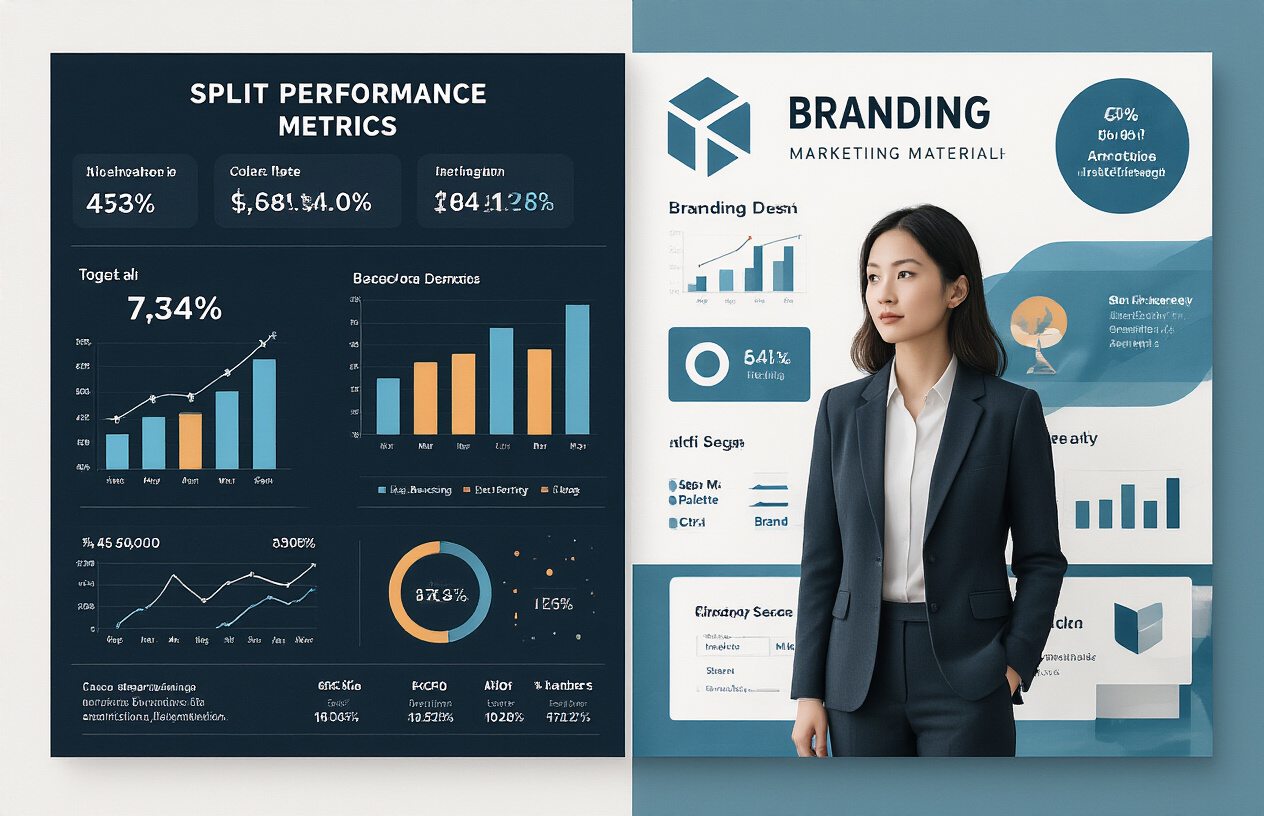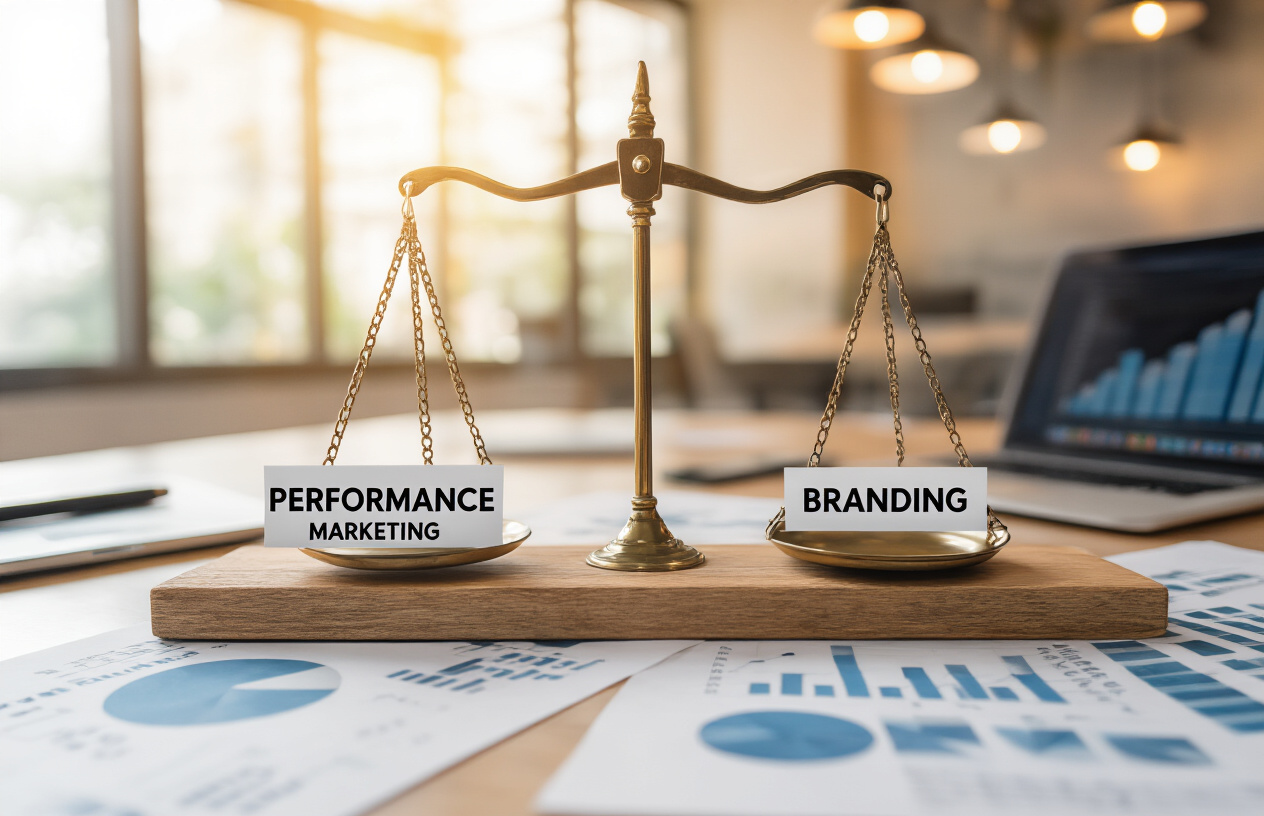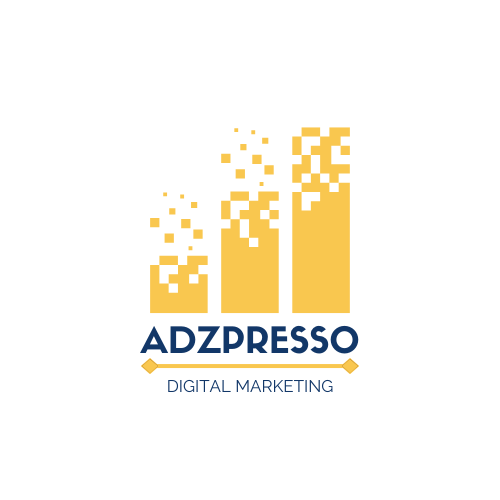You’re obsessing over the wrong marketing debate right now.
I’ve seen businesses blow six figures on performance campaigns that generated zero sales, while others build eight-figure empires with almost no paid ads. The performance marketing vs. branding decision isn’t about picking one—it’s about knowing when to leverage each.
By the end of this post, you’ll understand exactly how successful companies balance performance marketing and branding strategies based on your specific business stage and goals.
Think your industry is “different” and only one approach works? That’s what the founder of that failed DTC brand thought too—right before their competitor with the opposite strategy acquired them for pennies on the dollar.
What’s the real framework that determines which approach deserves your focus right now?
Understanding Performance Marketing and Branding

Key differences between performance marketing and branding
Performance marketing and branding are like two siblings who look nothing alike. One’s all about the numbers, the other’s playing the long game.
Performance marketing focuses on immediate, measurable results. You spend $1, you want to see $2 back—right now. It’s tactical, data-driven, and frankly, a bit impatient.
Branding, on the other hand, doesn’t care about tomorrow’s sales report. It’s building something bigger—a feeling, a reputation, a story that sticks in people’s minds long after they’ve scrolled past your ad.
| Performance Marketing | Branding |
|---|---|
| Short-term focus | Long-term vision |
| Direct response | Emotional connection |
| Campaign-oriented | Consistent presence |
| Conversion metrics | Awareness metrics |
| Immediate ROI | Future customer value |
How each strategy impacts your bottom line
Performance marketing shows up on your P&L statement right away. Run a campaign, watch sales spike, calculate ROI, repeat. Clean, simple, addictive.
But branding? That’s your business’s 401K. You won’t see the returns tomorrow, but skip it and you’ll feel the pain years down the road when customers can’t remember your name.
The smartest businesses don’t pick sides—they recognize that performance feeds today’s numbers while branding builds tomorrow’s pipeline. Without performance, you might not survive long enough to build a brand. Without branding, your performance campaigns get more expensive as you compete solely on price and promotion.
The measurable metrics of performance marketing
Performance marketing comes with a buffet of delicious metrics:
- Cost per acquisition (CPA)
- Return on ad spend (ROAS)
- Conversion rate
- Click-through rate (CTR)
- Cost per click (CPC)
These numbers tell you exactly what’s working and what’s not. You can track the customer journey from first click to checkout, optimizing every step along the way.
That’s why performance marketing is so addictive—it gives marketers concrete proof that their work matters. When the CEO asks what marketing did this month, performance marketers have spreadsheets full of answers.
The intangible value of brand building
Brand building creates value you can feel but can’t always measure:
- Trust (which shortens sales cycles)
- Recognition (which reduces acquisition costs)
- Loyalty (which increases lifetime value)
- Price premium (which improves margins)
- Talent attraction (which builds internal strength)
These benefits compound over time. A strong brand means you don’t have to scream for attention—customers come looking for you.
Think of Nike. They could stop advertising tomorrow and still sell shoes for years based on brand strength alone. That’s the power of playing the long game.
Brand value shows up in ways performance marketing can’t touch—like when a customer chooses you despite a competitor’s discount, or when a crisis hits and people give you the benefit of the doubt.
The Power of Performance Marketing
Immediate ROI and data-driven decision making
Performance marketing isn’t just another buzzword. It’s the approach that gives you cold, hard numbers to back up your marketing spend.
Unlike traditional marketing where you might throw money into a TV ad and pray, performance marketing shows you exactly what you’re getting for every dollar spent. Today. Not next quarter.
The beauty is in the metrics. Click-through rates, conversion rates, cost per acquisition—these aren’t just fancy terms to impress your boss. They’re your roadmap to profitability.
Smart marketers are obsessed with these numbers because they tell the real story. When your Facebook campaign generates $3 for every $1 spent, that’s not theory—that’s money in the bank.
Targeting capabilities and customer acquisition
Gone are the days of blasting your message to everyone with a pulse. Performance marketing lets you get surgical with your targeting.
Want to reach 35-year-old dog owners in Seattle who recently bought hiking gear? Done. Looking for C-suite executives who’ve visited your pricing page twice? You got it.
This precision means your acquisition costs plummet while conversion rates soar. Why? Because you’re not wasting resources on people who don’t care about what you’re selling.
The real game-changer is retargeting. Someone browses your product then leaves? No problem. Your ads follow them around the internet like a friendly reminder until they’re ready to buy.
Scaling campaigns based on performance
The best part about performance marketing? When something works, you can pour gas on the fire.
Found a winning ad creative that’s crushing it with a specific audience? Scale it up. Double the budget and watch your results multiply. If the ROI holds, keep pushing.
This isn’t guesswork. It’s mathematical:
| Campaign Performance | Action |
|---|---|
| 3x+ ROI | Scale aggressively |
| 2-3x ROI | Scale moderately |
| 1-2x ROI | Optimize and test |
| <1x ROI | Pause and reassess |
Performance marketers live by this table. They cut losers quickly and double down on winners relentlessly.
Digital channels that excel for performance marketing
Not all channels are created equal when it comes to performance marketing.
Paid search captures active buyers at the perfect moment—when they’re actually searching for solutions. Social media advertising offers unmatched targeting capabilities based on interests and behaviors. Email marketing still delivers the highest ROI of any channel ($42 for every $1 spent, according to some studies).
But the real magic happens when you connect these channels. Your search ads drive awareness, your social retargeting builds consideration, and your email sequences close the deal.
Case studies of successful performance marketing campaigns
The proof is in the pudding, right? Let’s look at real examples:
Dollar Shave Club spent just $4,500 on their viral video that drove 12,000 orders in the first 48 hours. That’s performance marketing at its finest—measurable results tied directly to spend.
Casper mattress dominated the sleep industry by obsessively tracking their customer acquisition costs across channels, doubling down on what worked, and creating a conversion-optimized path to purchase.
Glossier built a billion-dollar beauty brand by turning customers into micro-influencers—each with their own trackable link that earns them commission. The result? Customer acquisition costs 80% lower than industry averages.
These aren’t flukes. They’re the predictable results of marketing that prioritizes performance above all else.
The Long-Term Value of Brand Building

Creating emotional connections with customers
People don’t fall in love with metrics or conversion rates. They fall in love with brands that make them feel something.
The most powerful brands in the world don’t just sell products—they sell feelings. Think about Apple. When you buy their products, you’re not just getting a phone or laptop. You’re buying into creativity, innovation, and that little rush of excitement when you open the perfectly designed box.
This emotional connection is what separates forgettable companies from unforgettable brands. It’s the difference between “I need a coffee” and “I need my Starbucks.”
Want proof? Brain scans show that strong brands activate the same areas in our brains associated with relationships and positive emotions. We literally form attachments to brands like we do with people.
How strong brands command premium pricing
Ever wonder why people happily pay $5 for a Starbucks coffee when the diner down the street charges $1.50?
That’s the pricing power of a strong brand.
When you’ve built real brand equity, price sensitivity drops dramatically. Look at these examples:
| Brand | Price Premium | Customer Perception |
|---|---|---|
| Apple | 40-50% | “Worth it for the experience” |
| Nike | 20-30% | “Paying for performance and status” |
| Lululemon | 30-40% | “Investment in quality and lifestyle” |
This isn’t magic—it’s the payoff for consistent brand building. When customers believe your product delivers unique value that nobody else can match, price becomes secondary.
Building customer loyalty beyond transactions
Transactions fade. Relationships stick.
Performance marketing might get you the first sale, but brand building gets you the tenth. The twentieth. The lifetime customer who brings their friends.
True loyalty isn’t about points programs or discount cards. It’s when customers identify with your brand’s values and story so deeply that switching feels like betraying part of themselves.
The stats back this up. Loyal customers:
- Spend 67% more than new ones
- Are 5x more likely to repurchase
- Are 4x more likely to refer others
You simply can’t performance-market your way to that kind of relationship.
Brand equity as a business asset
While performance marketing lives on your P&L, brand equity lives on your balance sheet.
Strong brands aren’t expenses—they’re investments that appreciate over time. They’re business assets that:
- Buffer against competitive threats (try competing with Coca-Cola)
- Command higher acquisition offers (companies pay premiums for beloved brands)
- Recover faster from PR disasters (strong brands get more second chances)
- Reduce hiring costs (people want to work for brands they admire)
During tough times, performance marketing budgets get slashed first. But companies with strong brands can weather economic storms because their foundation isn’t built on temporary ad spend—it’s built on lasting customer relationships.
When the market gets noisy, a distinct brand voice cuts through. When competitors copy your features, they can’t copy your brand.
Finding Your Optimal Marketing Balance

Assessing your business growth stage
The truth? Your marketing approach needs to match where your business actually stands right now.
Startups and new brands typically need performance marketing to generate quick wins and cash flow. You can’t build a reputation if you don’t survive your first year.
Established businesses can afford to shift more budget toward branding because they’ve already got revenue streams and aren’t fighting for their next customer just to keep the lights on.
Here’s what this typically looks like:
| Growth Stage | Performance/Brand Ratio | Primary Focus |
|---|---|---|
| Early startup | 80/20 | Customer acquisition, immediate ROI |
| Growth phase | 60/40 | Scaling while building recognition |
| Established | 40/60 | Brand loyalty, market position |
| Market leader | 30/70 | Category dominance, legacy building |
Industry-specific considerations
Your industry changes everything.
DTC e-commerce? You probably need more performance marketing—customers are comparison shopping and looking for deals.
Luxury goods? Branding should dominate—people aren’t buying $5,000 watches because of a targeted Facebook ad.
B2B software companies often need a 50/50 split. Decision-makers want both trust signals (branding) and concrete ROI metrics (performance).
Budgeting for both strategies effectively
Stop thinking of these as separate buckets. Smart companies create campaigns that do both jobs.
Try this approach:
- Allocate a guaranteed minimum to branding (15-20% of total marketing budget)
- Dedicate another 15-20% to pure performance plays
- Use the remaining 60-70% on integrated campaigns that serve both masters
The most efficient marketing today blurs these lines—like educational content that builds authority while generating leads, or performance campaigns that maintain consistent visual identity.
When cash gets tight, most businesses slash branding first. That’s shortsighted. Instead, look for inefficient performance channels you can trim without touching your brand investment.
Integration Strategies for Maximum Impact

Using performance data to inform brand positioning
Numbers don’t lie. Performance marketing gives you mountains of data about what resonates with your audience. Smart brands use this goldmine to shape their brand positioning.
When you see certain messages driving higher CTRs or conversion rates, that’s your audience telling you what matters to them. Maybe your “eco-friendly” messaging outperforms your “premium quality” angle by 30%. That’s not just a performance insight—it’s a brand positioning opportunity.
The best companies create feedback loops where:
- Campaign data influences brand messaging priorities
- Customer journey analytics reshape brand stories
- Engagement metrics determine which brand values to emphasize
Don’t keep your performance and brand teams in separate rooms. When they share insights daily, magic happens.
Leveraging brand strength to improve performance metrics
Strong brands get cheaper clicks. Period.
When people recognize and trust you, they’re more likely to:
- Click your ads (higher CTR)
- Stay on your site (lower bounce rate)
- Complete purchases (higher conversion)
- Come back again (better retention)
A McKinsey study found that strong brands consistently outperform their categories by 5-7% in conversion rates across digital channels.
The brand halo effect is real. I’ve seen companies cut their CPAs in half after investing in brand awareness campaigns for 6-12 months.
Your performance budget goes further when backed by solid branding. It’s like running downhill instead of uphill.
Creating a cohesive customer journey across both approaches
Brand awareness and performance marketing aren’t separate paths—they’re different parts of the same journey.
Think about it like this:
- Brand efforts make people familiar with you
- Performance tactics convert that familiarity into action
- Post-purchase experiences reinforce brand perception
- The cycle continues and strengthens
Your customer doesn’t think “Now I’m experiencing their brand marketing” and then “Now I’m in their performance funnel.” They just see your business.
Alignment is everything. Your Facebook ads should feel connected to your billboard campaign. Your Google search ads should reflect the same tone as your TV spots. Consistency builds trust and improves performance.
Timeline expectations for integrated strategies
Integration takes time. Don’t expect overnight miracles.
Rough timeline guide:
| Timeframe | What to Expect |
|---|---|
| 0-3 months | Performance baseline established, brand foundations set |
| 3-6 months | Early integration signals, improved targeting efficiency |
| 6-12 months | Performance metrics improving, brand awareness growing |
| 12-24 months | Full integration benefits, compound growth effects |
The businesses that struggle most are those expecting immediate results. Brand building is like compound interest—slow at first, then exponential.
Performance tactics can show ROI quickly, but their effectiveness multiplies when your brand strengthens. Patience pays off here.
Measuring success across both dimensions
You need a holistic measurement framework that values both immediate returns and long-term equity.
Beyond the obvious metrics (ROAS, CPA, CTR), track:
- Brand search volume trends
- Share of voice relative to competitors
- Retention and repeat purchase rates
- Customer acquisition cost over time (not just initial conversion)
- Lifetime value by acquisition channel
Multi-touch attribution models help, but they’re not perfect. The most sophisticated companies use marketing mix modeling alongside digital attribution to understand both short and long-term impacts.
Remember that some brand effects are defensive—preventing decline rather than driving growth. Measure what you’d lose without brand investment, not just what you gain.

The digital marketing landscape presents businesses with a strategic choice between performance marketing’s immediate ROI and branding’s enduring value. Rather than viewing these approaches as competing alternatives, successful businesses recognize they work best as complementary forces. The optimal marketing strategy balances short-term conversion tactics with consistent brand-building efforts, adapting to your business stage, industry dynamics, and target audience.
Your most powerful marketing approach integrates both disciplines—using data-driven performance campaigns that reflect your brand values while ensuring brand initiatives include measurable elements. By embracing this balanced perspective, your business can enjoy both immediate results and sustainable growth, creating a marketing ecosystem where each element strengthens the other and builds lasting customer relationships.
